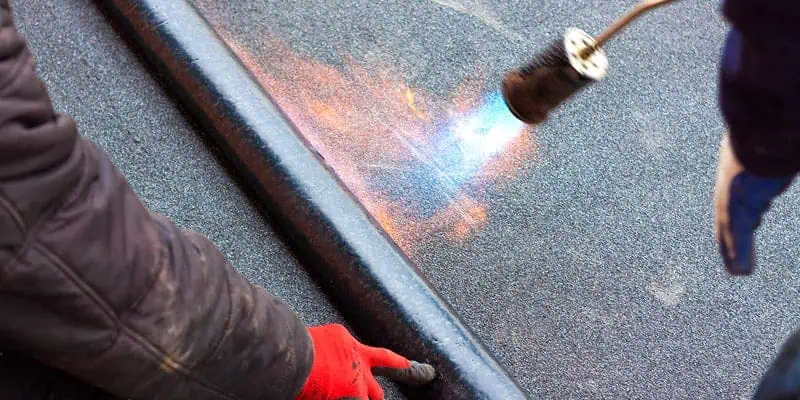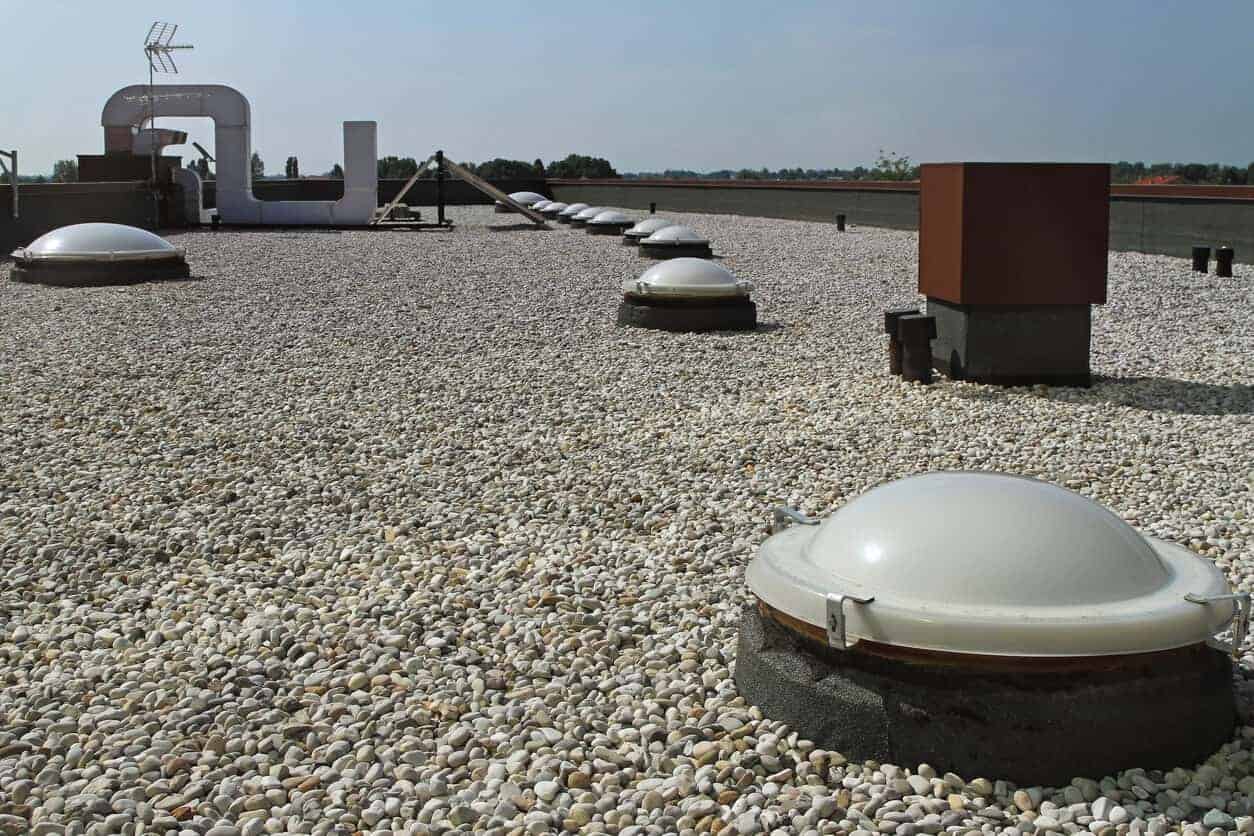Here’s a beginner’s guide to two major categories of commercial roofing systems: asphalt roofing vs. single ply membrane roofing. There are benefits of each system, which we will briefly address. Of course, you must consult with a roofing industry expert to understand what type of system is the best for your building.
Built-Up Roofing (BUR)
Built-up roofing systems (BUR) have been around for over 100 years. The system consists of alternating layers of bitumen (asphalt) and ply sheets with a gravel surface or mineral cap sheet.
Modified bitumen (MB) is a more modern version of BUR. A mod bit system is different from a traditional BUR system because a chemical polymer is added to the asphalt, which increases the system’s flexibility and temperature resistance. Modified bitumen membranes are manufactured in plants with reinforcements to provide a thick, asphalt-based roofing system.
Both commercial flat roofing methods (BUR and MB) are highly durable because of the multiple layers and coarse surface to reflect the sun’s ultr-violet rays. They both perform well in extreme weather conditions. In addition, because of this granulated surface, both the BUR and modified bitumen membrane are resistant to heavy foot traffic. These systems tend to be thicker than single-ply membranes and offer redundant layers to protect the building.
Maintenance: A professional should inspect and perform maintenance on the roof surface at least twice per year. Please note if leaks do form, the gravel top layer and several underlying layers make it challenging to detect the source.
Warranties: Modified bitumen roofing systems are available with warranties that last between 20 and 30 years.
Single Ply Membrane Roofing
There are several types of single-ply membranes used for commercial roofing projects. They are further categorized as elastomeric (EPDM or rubber roofs) or thermoplastic (TPO and PVC) systems. (Thermoplastic materials are readily formed or changed in shape upon application.) Here’s a bit about each type of single ply membrane roof.
The Ethylene Propylene Diene Monomer (EPDM) roofing membrane is made from industrial-grade synthetic rubber, which has been used for commercial roofs for over 50 years. The rolls of rubber can be as large as 50’ x 200’ and can expand and contract with temperature changes. EPDM is highly resistant to ultraviolet light. Tapes or adhesives are used for the seams.
Thermoplastic Polyolefin (TPO) is made of polypropylene and ethylene-propylene rubber. It’s the most common single-ply membrane system in the U.S. The materials come in rolls that are up to 16’ x 100’. The seams are hot-air welded.
The PVC single ply roof system is similar to TPO, as both have polyester reinforcements and hot-air welded seams. However, the top layer of PVC contains additives that make the surface more resistant to chemicals.
Single Ply Roofing System Maintenance: Regular checks and periodic cleaning are required to maintain single ply roofs. Also, ensuring the roof surface has proper drainage is essential. (However, this is true for all roofing systems.)
Finally, it’s worth noting that a building owner should cut back trees overhanging a roof with a single-ply system – as punctures from falling branches can tear the membrane.
Single Ply Membrane Roofing Warranties: A well-maintained, properly installed single ply membrane roofing system can be warranted for up to 30 years.
Which is Better? BUR or a Single Ply Membrane Roof?
Consult with commercial roofing experts at Nations Roof to help determine whether an asphalt-based roofing system or single ply system suits your existing roof. We are experts in low slope roofs and will inspect your current system to determine the best course of action for your commercial building – whether that’s a BUR, modified bitumen, single ply, or other roofing systems.
Key Takeaways: Asphalt Roofing vs. Single Ply Membrane Roofing
- Two types of asphalt roofing systems exist – BUR and Modified Bitumen. These multi-layer systems are durable and offer a thicker, redundant roofing system..
- The most common single ply roofing membranes are EPDM, TPO, and PVC. They are lightweight, reinforced, resistant to UV rays, and can be formed to the exact shape of penetrations on the roof.




